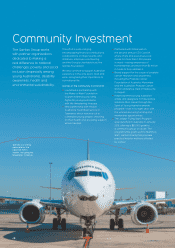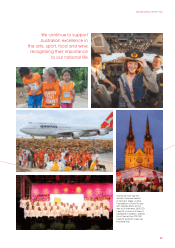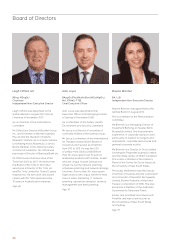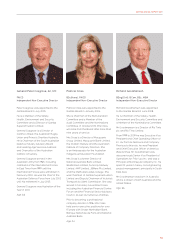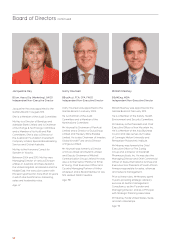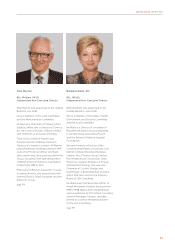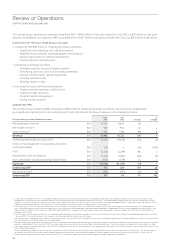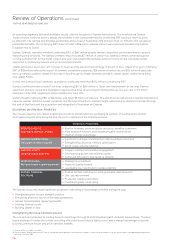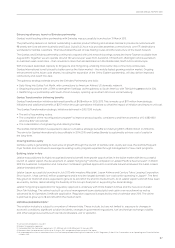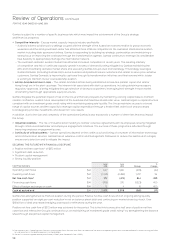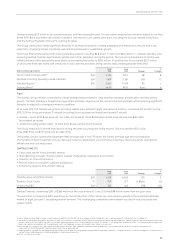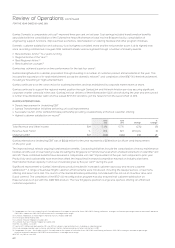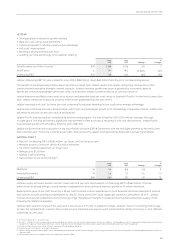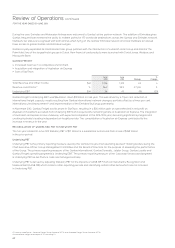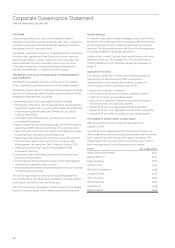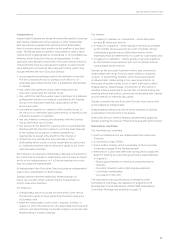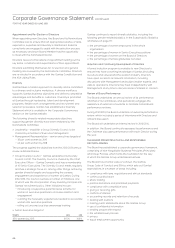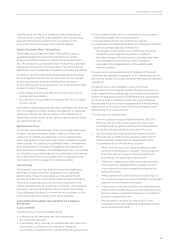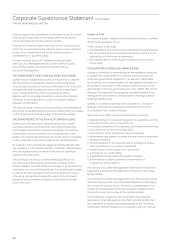Qantas 2013 Annual Report Download - page 60
Download and view the complete annual report
Please find page 60 of the 2013 Qantas annual report below. You can navigate through the pages in the report by either clicking on the pages listed below, or by using the keyword search tool below to find specific information within the annual report.
58
Review of Operations continued
FOR THE YEAR ENDED 30 JUNE 2013
Qantas is subject to a number of specic business risks which may impact the achievement of the Group’s strategy
andnancialprospects:
»Competitive intensity – Excess market capacity impacts industry protability
— Australia’s liberal aviation policy settings coupled with the strength of the Australian economy relative to global economic
weakness and the strong Australian dollar has attracted more offshore competitors to the Australian international aviation
market including state sponsored airlines. Qantas is responding by building key strategic partnerships and maintaining a
strong focus on improving the cost base through the transformation agenda. Qantas continues to leverage its considerable
eet exibility to appropriately manage the international network.
— The Australian domestic aviation market has attracted increased competition in recent years. The resulting intensity
ofcompetition and risk of continued capacity growth in excess of demand is being mitigated by Qantas maintaining the
65%prot maximising domestic market share and executing Qantas Group’s dual brand strategy. This strategy leverages
Qantas Domestic (including QantasLink) to serve business and premium leisure customers and Jetstar to serve price sensitive
customers. Qantas Domestic is improving its cost base through its transformation initiatives and eet renewal whileJetstar
isworking to maintain its low-cost leadership position.
»Jetstar-branded airlines in Asia – The Jetstar-branded airlines being established across Asia (Jetstar Japan and Jetstar
Hong Kong) are in the start-up phase. The inherent risk associated with start-up operations, including obtaining necessary
regulatory approvals, is being mitigated through selection of strong local partners, leveraging their strength in each market
and sharing risk through appropriate equity structures.
Qantas mitigates the potential impact of risk on the Group’s nancial prospects by maintaining a strong capital base to maintain
creditor condence, sustain future development of the business and maximise shareholder value. Qantas targets a capital structure
consistent with an investment grade credit rating while maintaining adequate liquidity. The Group maintains access to a broad
range of capital sources and the capacity to manage capital expenditure through a exible eet order book and processes
to strategically prioritise investments and divest non-core assets.
In addition, due to the size and complexity of the operations Qantas is also exposed to a number of other risks that may impact
theGroup:
»Industrial relations – The risk of industrial action relating to Qantas’ collective agreements with its employees is being mitigated
through continuous stakeholder and employee engagement initiatives. The success of these programs is reected through
improving employee engagement scores.
»Continuity of critical systems – Qantas operations depend on the continuous functioning of a number of information technology
and communication services. Qantas has an extensive control and management framework to reduce the likelihood of outages,
ensure early detection and to mitigate the impact.
SECURING THE FUTURE WITH FINANCIAL DISCIPLINE
»Positive net free cash ow24 of $372 million
»Signicant debt reduction
»Prudent capital management
»Strong liquidity position
Cash Flow Summary June
2013
June
2012 Change
%
Change
Operating cash ows $M 1,417 1,810 (393) (22)
Investing cash ows $M (1,045) (2,282) 1,237 54
Net free cash ow24 $M 372 (472) 844 >100
Financing cash ows $M (953) 370 (1,323) >100
Effect of foreign exchange on cash $M 12 4 8 >100
Cash at period end $M 2,829 3,398 (569) (17)
Qantas has strengthened its nancial position during the period. Positive net free cash ows and an ongoing strong liquidity
position supported an eight per cent reduction in net on balance sheet debt and continuing on-market share buy-back. Over
$1.8billion of debt and related hedging was repaid or renanced during the year.
Positive net free cash ow of $372 million was achieved for the period. This is the third consecutive half year of positive net free
cash ow and reects the Group’s continued focus on maintaining an investment grade credit rating25 by strengthening the balance
sheet through disciplined capital management.
24 Net free cash ow – Operating cash ows less investing cash ows. Net free cash ow is a measure of the amount of operating cash ows that are available (i.e. after investing activities)
tofund reductions in net debt or payments to shareholders.
25 Qantas is investment grade rated by both Moody’s (Baa2) and Standard & Poor’s (BBB-).


